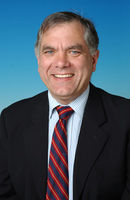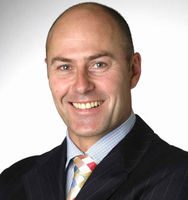North Auckland, West Auckland > Private Hospitals & Specialists > Southern Cross Hospitals >
Southern Cross North Harbour Hospital - Otolaryngology, Head & Neck Surgery
Private Surgical Service, ENT/ Head & Neck Surgery
Description
Established in 1991, our North Harbour Hospital typically provides services to over 7,000 patients annually, and is widely known amongst patients and specialists in the area. It is their demand for our services that drives new investments, and that has delivered significant extensions, implementation of new technologies, and ongoing improvements to operating and nursing facilities. Recent upgrades have also seen improvements to recovery and day stay and pre-admission facilities and specialist consulting areas.
Within the grounds of the North Harbour Hospital campus is the Northern Clinic, which comprises Specialist consulting, Endoscopy services, Image Guided Healthcare, Radiology services and rehabilitation.
The hospital campus offers specialists and their patients access to new advanced operating theatres, including a robotically-assisted surgical system and other advanced technologies to support advanced imaging and a range of minimally invasive treatments. New recovery areas and other patient facilities have also been added, during 2017, along with new consulting rooms and a purpose-built endoscopy suite. These facilities offer patients a wide range of specialist services on one developing health campus which also includes a pharmacy, radiology unit, cardiology services, and a specially designed post-operative intermediate care facility - which helps to increase the scope and complexity of surgical services that can be provided within the private sector on Auckland's North Shore.
Consultants
-

Mr Nic Bodenstein
Otolaryngologist
-

Mr John Chaplin
Otolaryngologist, Head & Neck Surgeon
-

Mr Andrew Cho
Otolaryngologist, Head & Neck Surgeon
-

Mr Michael Davison
Otolaryngologist
-

Dr David Vokes
Otolaryngologist, Head & Neck Surgeon
Procedures / Treatments
Your adenoids may be removed as part of a tonsillectomy. This operation is also performed through your mouth.
Your adenoids may be removed as part of a tonsillectomy. This operation is also performed through your mouth.
Your adenoids may be removed as part of a tonsillectomy. This operation is also performed through your mouth.
A tiny camera attached to a long tube is inserted through your nose or mouth and passed down through the airways into your lungs. This allows the surgeon to make a diagnosis either by seeing directly what is causing the problem or by taking a small tissue (biopsy) or lung secretion sample.
A tiny camera attached to a long tube is inserted through your nose or mouth and passed down through the airways into your lungs. This allows the surgeon to make a diagnosis either by seeing directly what is causing the problem or by taking a small tissue (biopsy) or lung secretion sample.
A tiny camera attached to a long tube is inserted through your nose or mouth and passed down through the airways into your lungs. This allows the surgeon to make a diagnosis either by seeing directly what is causing the problem or by taking a small tissue (biopsy) or lung secretion sample.
An incision (cut) is made behind your ear and the skin pulled back exposing the mastoid bone. A hole is drilled through this bone to expose the cochlear. The electrodes of the cochlear implant are inserted into the cochlear while the receiver part of the implant is embedded into the skull just underneath the skin. The skin is then replaced back over the implant.
An incision (cut) is made behind your ear and the skin pulled back exposing the mastoid bone. A hole is drilled through this bone to expose the cochlear. The electrodes of the cochlear implant are inserted into the cochlear while the receiver part of the implant is embedded into the skull just underneath the skin. The skin is then replaced back over the implant.
An incision (cut) is made behind your ear and the skin pulled back exposing the mastoid bone. A hole is drilled through this bone to expose the cochlear. The electrodes of the cochlear implant are inserted into the cochlear while the receiver part of the implant is embedded into the skull just underneath the skin. The skin is then replaced back over the implant.
A tiny camera attached to a tube (endoscope) is inserted into your nose. Very small instruments can be passed through the endoscope and used to remove small pieces of bone and soft tissue. This opens up the ventilation and drainage pathways in the outer wall of your nose.
A tiny camera attached to a tube (endoscope) is inserted into your nose. Very small instruments can be passed through the endoscope and used to remove small pieces of bone and soft tissue. This opens up the ventilation and drainage pathways in the outer wall of your nose.
A tiny camera attached to a tube (endoscope) is inserted into your nose. Very small instruments can be passed through the endoscope and used to remove small pieces of bone and soft tissue. This opens up the ventilation and drainage pathways in the outer wall of your nose.
This operation is performed through the ear canal. A hole is made in the eardrum and the middle ear drained. A small hollow tube (grommet) is placed in the eardrum hole which allows air into the middle ear.
This operation is performed through the ear canal. A hole is made in the eardrum and the middle ear drained. A small hollow tube (grommet) is placed in the eardrum hole which allows air into the middle ear.
This operation is performed through the ear canal. A hole is made in the eardrum and the middle ear drained. A small hollow tube (grommet) is placed in the eardrum hole which allows air into the middle ear.
Nose surgery includes a range of procedures to change the shape, improve the function, or treat medical conditions of the nose. Common types include: Rhinoplasty – reshapes the nose for cosmetic or functional reasons. Septoplasty – straightens a deviated nasal septum (the thin wall between the nostrils) to improve breathing. Turbinoplasty – reduces swollen nasal tissues to ease airflow. Sinus surgery – treats chronic sinus infections or blockages.
Nose surgery includes a range of procedures to change the shape, improve the function, or treat medical conditions of the nose. Common types include: Rhinoplasty – reshapes the nose for cosmetic or functional reasons. Septoplasty – straightens a deviated nasal septum (the thin wall between the nostrils) to improve breathing. Turbinoplasty – reduces swollen nasal tissues to ease airflow. Sinus surgery – treats chronic sinus infections or blockages.
Nose surgery includes a range of procedures to change the shape, improve the function, or treat medical conditions of the nose. Common types include:
- Rhinoplasty – reshapes the nose for cosmetic or functional reasons.
- Septoplasty – straightens a deviated nasal septum (the thin wall between the nostrils) to improve breathing.
- Turbinoplasty – reduces swollen nasal tissues to ease airflow.
- Sinus surgery – treats chronic sinus infections or blockages.
A tiny camera attached to a long tube is inserted into your mouth and passed down through your pharynx into your oesophagus. This allows the surgeon to make a diagnosis either by seeing directly what is causing the problem or by taking a small tissue sample (biopsy).
A tiny camera attached to a long tube is inserted into your mouth and passed down through your pharynx into your oesophagus. This allows the surgeon to make a diagnosis either by seeing directly what is causing the problem or by taking a small tissue sample (biopsy).
A tiny camera attached to a long tube is inserted into your mouth and passed down through your pharynx into your oesophagus. This allows the surgeon to make a diagnosis either by seeing directly what is causing the problem or by taking a small tissue sample (biopsy).
Nasal polyps are removed by inserting small instruments through your nostrils which can grasp and cut out the polyps.
Nasal polyps are removed by inserting small instruments through your nostrils which can grasp and cut out the polyps.
Nasal polyps are removed by inserting small instruments through your nostrils which can grasp and cut out the polyps.
Small cuts (incisions) are made either on the inside or outside (in the creases) of the nose. Excess bone and/or cartilage are removed and the nose reshaped.
Small cuts (incisions) are made either on the inside or outside (in the creases) of the nose. Excess bone and/or cartilage are removed and the nose reshaped.
Small cuts (incisions) are made either on the inside or outside (in the creases) of the nose. Excess bone and/or cartilage are removed and the nose reshaped.
Tonsils are removed in an operation performed through your mouth. The tissue between your tonsils and throat is cut and your tonsils removed.
Tonsils are removed in an operation performed through your mouth. The tissue between your tonsils and throat is cut and your tonsils removed.
Tonsils are removed in an operation performed through your mouth. The tissue between your tonsils and throat is cut and your tonsils removed.
This operation repositions the nasal septum and is performed entirely within your nose so that there are no external cuts made on your face.
This operation repositions the nasal septum and is performed entirely within your nose so that there are no external cuts made on your face.
This operation repositions the nasal septum and is performed entirely within your nose so that there are no external cuts made on your face.
Visiting Hours
- Weekdays: 11:00 to 20:00
- Weekends: 11:00 to 20:00
Travel Directions
Please use entry B, 232 Wairau Road for Hospital entrance, car parking and patient drop off.
click here for street view location.
Parking
Patient and visitor parking provided.
Contact Details
Southern Cross North Harbour Hospital
North Auckland
Phone: (09) 925 4400
Fax: (09) 925 4434
E-mail: northharbour@southerncrosshospitals.co.nz
Location details here
Surgeons can be contacted directly at their private consultation rooms.
232 Wairau Road
Totara Vale
Kaipātiki
Auckland 0629
Street Address
232 Wairau Road
Totara Vale
Kaipātiki
Auckland 0629
Postal Address
P.O. Box 101-488,
North Shore Mail Centre,
Auckland City, 0745
Was this page helpful?
This page was last updated at 1:52PM on May 22, 2025. This information is reviewed and edited by Southern Cross North Harbour Hospital - Otolaryngology, Head & Neck Surgery.

